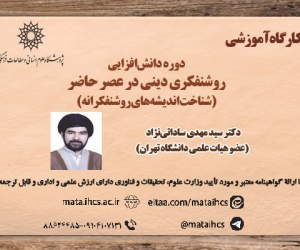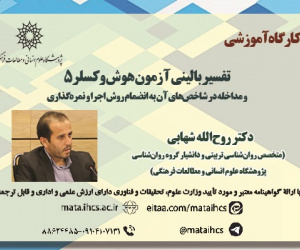سیاست گذاری توسعه و تثلیثِ ناکارآمدی ها بازسازیِ معناییِ ناکارآمدی سیاست گذاری توسعه در ایران براساس نظریه زمینه ای (مقاله علمی وزارت علوم)
درجه علمی: نشریه علمی (وزارت علوم)
آرشیو
چکیده
بیش از سه دهه تنها از عمر سیاست گذاری توسعه در ایران پس از انقلاب می گذرد اما ایران همچنان در چارک چهارم توسعه یافتگی و چارک اول توسعه نیافتگی قرار دارد. اگرچه توسعه یافتگی و توسعه نیافتگی را نمی توان تنها به امر سیاست گذاری تقلیل داد ولی سیاست گذاری همواره به عنوان یکی از عوامل مؤثر بر توسعه دیده شده است. بر همین اساس، این پژوهش می کوشد با استفاده از نظریه زمینه ای دلایل ناکامی سیاست گذاری توسعه در ایران از نظر متخصصان و متصدیان سیاست گذاری توسعه را فهم نماید. بر این اساس، با 22 متخصص و متصدی امر سیاست گذاری توسعه مصاحبه نیمه ساختاریافته صورت گرفت و مصاحبه ها از طریق کدگذاری سه مرحله ای شامل کدگذاری باز، محوری و انتخابی تحلیل گردید. در این تحلیل، ابتدا 629 مفهوم اولیه به دست آمد که در مراحل بعدی به 78 مقوله فرعی سپس 24 مقوله اصلی و نهایتاً یک مقوله هسته تقلیل یافت. مقوله هسته پژوهش یعنی تثلیت ناکارآمدی ها نشان داد سیاست گذاری توسعه در ایران دچار مثلث ناکارآمدی ها شامل ناکارآمدی حکمرانی، ناکارآمدی ساخت اجتماعی و ناکارآمدی نظم نخبگانی است که نه به صورت مجزا بلکه به صورت درهم تنیده، در یک مثلث مفصل بندی شده و ناکارآمدی سیاست گذاری توسعه در ایران را شکل بخشیده اند. این وضعیت مبین شکل گیری نوعی مثلث شوم در سیاست گذاری توسعه در ایران است و بر این موضوع تأکید دارد که در صورت تداوم این وضعیت، ایران درگیر نوعی توسعه نیافتگی مضاعف و تعلیق توسعه یافتگی پایدار خواهد شد.Semantic Reconstruction of the Inefficiency of Development Policymaking in Iran: A Grounded Theory Approach
More than three decades have passed since the adoption of development policies in Iran following the Islamic Revolution. Despite these efforts, Iran remains in the fourth quarter of development and the first quarter of underdevelopment. While development and underdevelopment cannot solely be attributed to policymaking, it is widely recognized as a critical factor influencing development. Employing the grounded theory approach, the present study sought to uncover the underlying reasons for the failure of development policy in Iran from the perspectives of experts and policymakers. First, semi-structured interviews were conducted with 22 experts and development policy managers. The collected data was analyzed through three stages of coding: open, axial, and selective. The analysis resulted in 629 primary concepts, which were refined and reduced into 78 subcategories, 24 main categories, and ultimately, one core category. The core category revealed that development policy in Iran suffers from a triangle of inefficiencies: the inefficiency of governance, the inefficiency of social structure, and the inefficiency of the elite order. These three inefficiencies are not isolated but interconnected, forming a kind of ominous triangle that undermines the efficiency of development policy in Iran. If these inefficiencies persist, Iran risks facing a double underdevelopment that can significantly hamper the pursuit of sustainable development. Introduction Development is one of the most pressing concerns for societies and nations worldwide. Various societies have pursued comprehensive and multidimensional progress by implementing diverse strategies, which are often structured as development policies. In the case of Iran, more than three decades have passed since the adoption of development policies following the Islamic Revolution. Yet, the country remains in the fourth quarter of development and the first quarter of underdevelopment, struggling to move beyond this phase. While development and underdevelopment cannot be attributed solely to policymaking, it is widely recognized as a critical factor influencing development. Relying on a grounded theory approach, this research sought to investigate the underlying reasons for the failure of development policy in Iran. It aimed to address the following questions: What are the causal conditions contributing to the inefficiency of development policy in Iran? What are the contextual conditions influencing the inefficiency of development policy in Iran? What are the intervening conditions affecting the inefficiency of development policy in Iran? What strategies can effectively improve the efficiency of development policy in Iran? What are the consequences of implementing strategies to improve the efficiency of development policy in Iran? Materials and Methods The current research used a grounded theory approach. The participants included experts, university professors, managers, and former administrators involved in development policy. A purposive sampling method with a homogeneous approach was applied to enrich the categories, dimensions, and components, as well as to achieve theoretical saturation. As a result, a total of 22 individuals were selected as participants. The data was collected through semi-structured interviews, and the interview process continued until theoretical saturation was reached. For data analysis, the three-stage coding method outlined by Strauss and Corbin (2015) was employed, encompassing open coding, axial coding, and selective coding. Results and Discussion The interviews were analyzed in three stages. During the open coding phase, 629 initial codes were extracted. At the next level of abstraction, these codes were organized into 78 subcategories, and finally categorized into 24 main categories. In the axial coding phase, the main and secondary categories were arranged according to paradigmatic dimensions, including causal conditions, contextual conditions, intervening conditions, strategies, and consequences. In the selective coding phase, a core category was identified, linking all the categories together. The causal conditions contributing to the inefficiency of development policy included: discourse conflicts, an anti-scenario futurism, a weak civil society coupled with a large mass society, the breakdown of elite communication, low institutional quality, an overly interventionist yet weak government, and the unrealistic, wishful thinking in program planning. The contextual conditions exacerbating development policy inefficiency were found to include poor timing, economic–political instability, and a lack of historical awareness. Intervening conditions identified were: epistemic foundations of anti-development, an absence of dialogue, an economic-focused and budget-oriented approach to planning, and an inappropriate composition of policy formulators. The strategies to enhance the efficiency of development policy in Iran, as identified by experts and policymakers, included: downsizing the government while empowering civil society, strengthening social capital, undertaking institutional and organizational reconstruction, adopting strategic foresight, achieving consensus among policymaking elites, and modernizing and screening development plans. If these strategies are implemented, Iran could experience multidimensional development, including improvements in life quality, social development, individual-cum-mental development, environmental livability, political development, and economic development. Conversely, failure to implement these strategies risks perpetuating multilayered underdevelopment, characterized by increasing unbalanced development, declining quality of life, reduced social satisfaction, rising costs, intensification of violence, and underdevelopment across economic, social, political, and environmental dimensions. Finally, the core category underlying these findings is the trinity of inefficiencies: incompetent governance, weak society, and elite disorder. Conclusion According to the research results, development policymaking in Iran suffers from a triangle of inefficiencies: the inefficiency of governance, the inefficiency of social structure, and the inefficiency of elite order. These inefficiencies are not isolated but are deeply interconnected, forming an ominous triangle that undermines development policymaking in Iran. If left unaddressed, it will entrench the country in a state of double underdevelopment and further delay the achievement of sustainable development.







